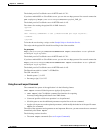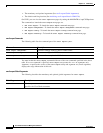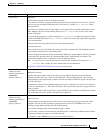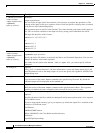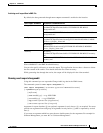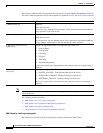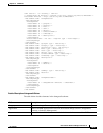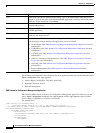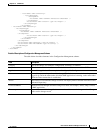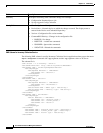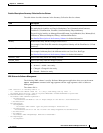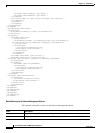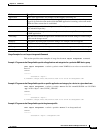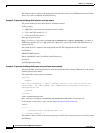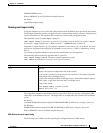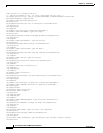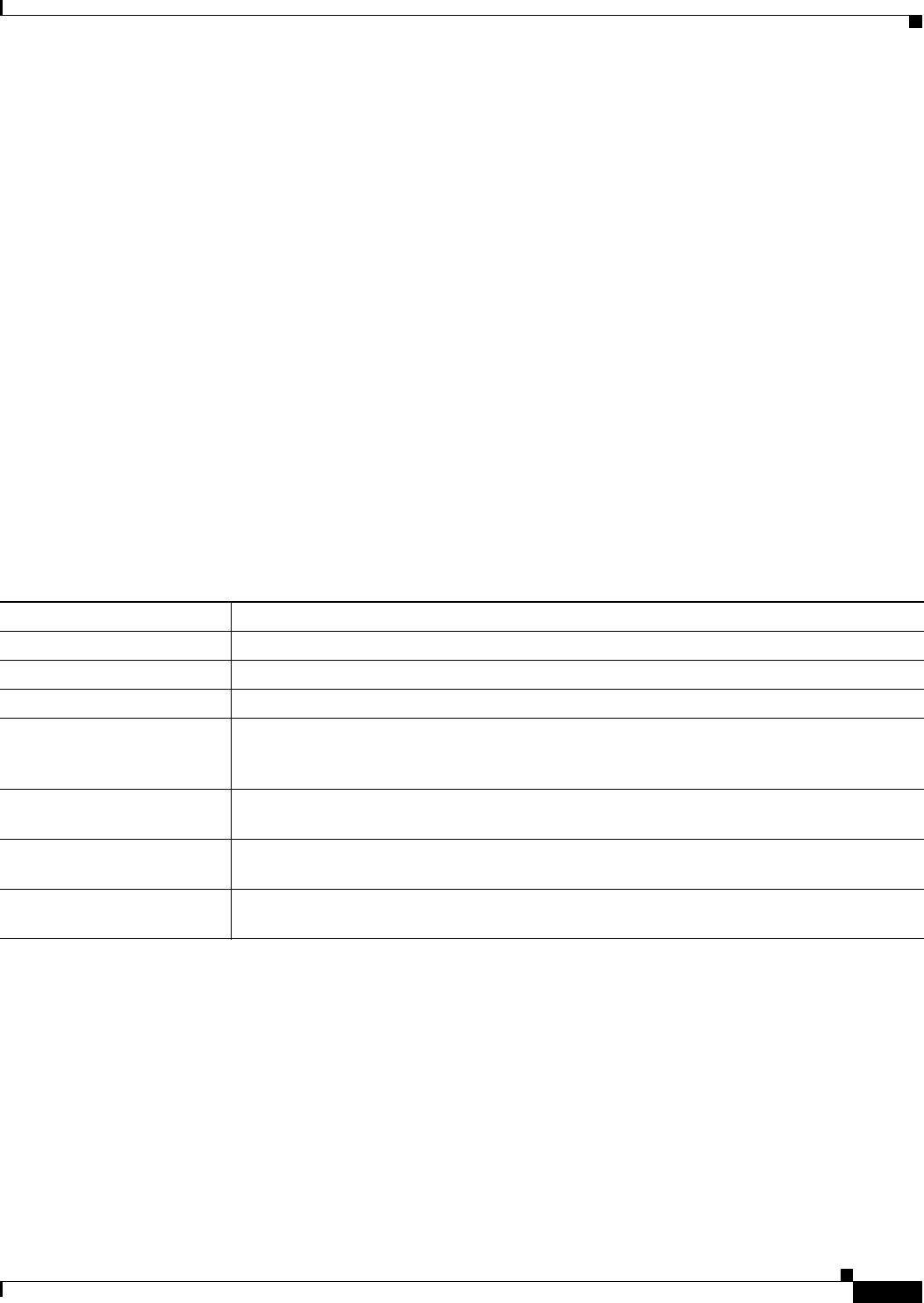
19-49
User Guide for Resource Manager Essentials 4.1
OL-11714-01
Chapter 19 CLI Utilities
CWCLI
- <xs:element name="OldConfig">
- <xs:complexType>
- <xs:sequence>
<xs:element name="Command" maxOccurs="unbounded" />
</xs:sequence>
<xs:attribute name="Version" type="xs:integer" />
</xs:complexType>
</xs:element>
- <xs:element name="NewConfig">
- <xs:complexType>
- <xs:sequence>
<xs:element name="Command" maxOccurs="unbounded" />
</xs:sequence>
<xs:attribute name="Vesrion" type="xs:integer" />
</xs:complexType>
</xs:element>
</xs:sequence>
<xs:attribute name="CASLogID" type="xs:integer" />
<xs:attribute name="DeviceName" type="xs:string" />
</xs:complexType>
</xs:element>
</xs:schema>
Detailed Description of Configuration Management Schema
The table below describes elements in the Configuration Management schema.
Field Description
Category Type of the change. For example, configuration, inventory, or software.
Host Host device from which the user accessed the device or the host name of the RME server.
Application Name of the application. For example, Archive Mgmt, NetConfig, etc.
User Name of the person who performed the change. This is the name entered when the person
logged in. It can be the name under which the RME application is running, or the name under
which the Telnet connection is established.
Device Network device on which the change occurred. The display name as entered in the Device and
Credential Repository.
ConnectionMode Connection mode through which the change was made, for example, Telnet, snmp, console,
or RME application.
Timestamp Date and time at which the application communicated the network change or when Change
Audit saw the change record.



